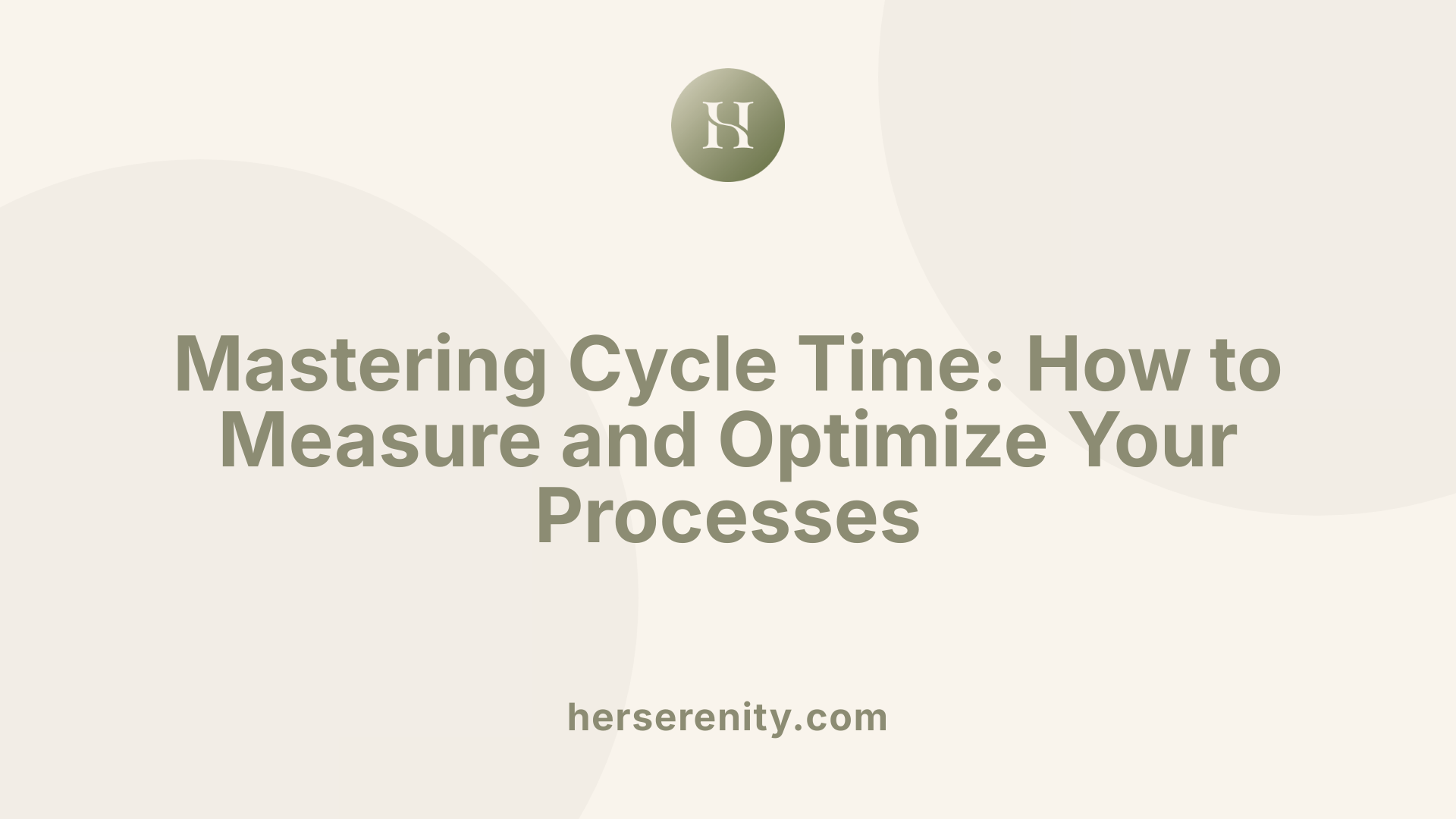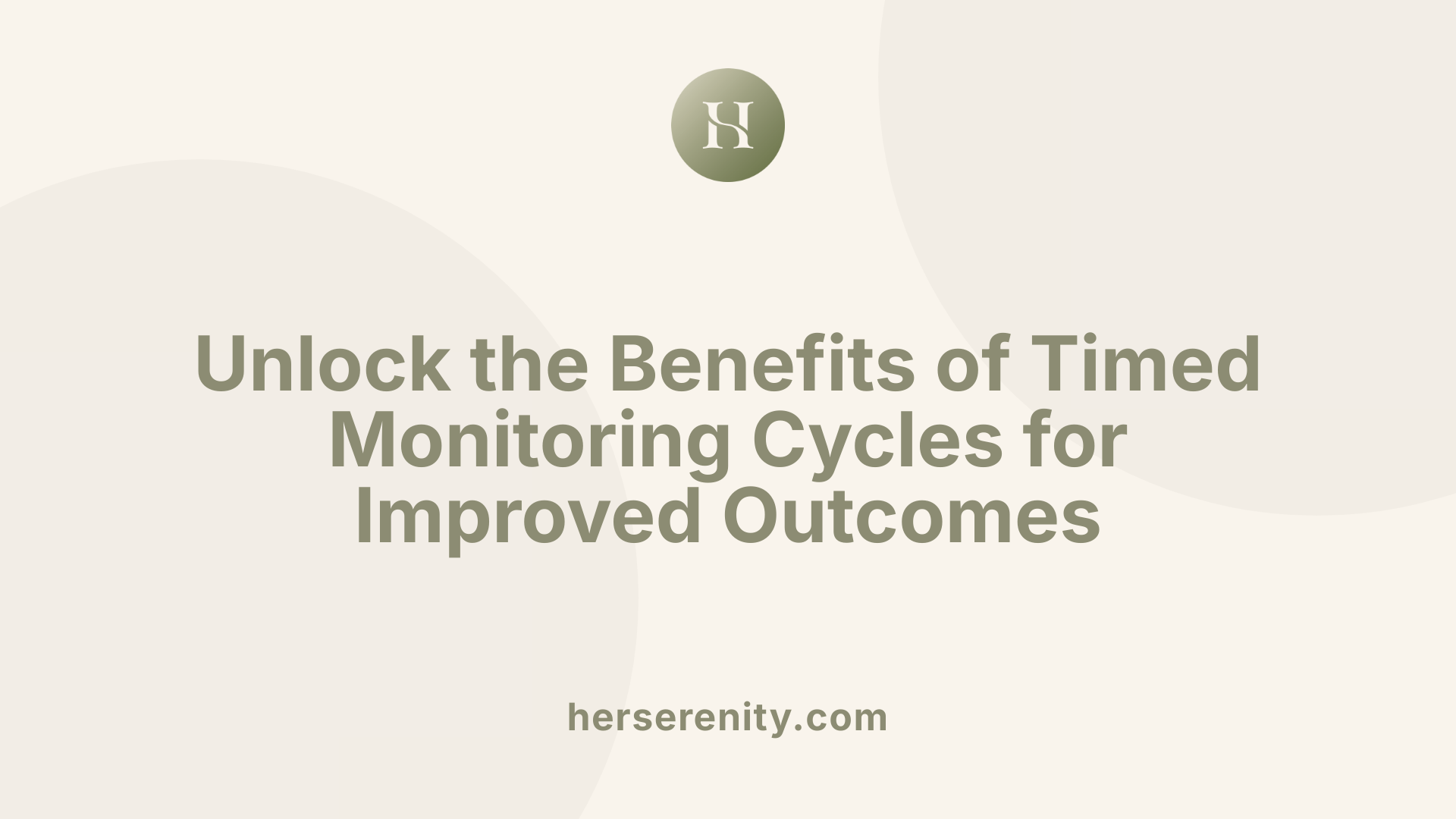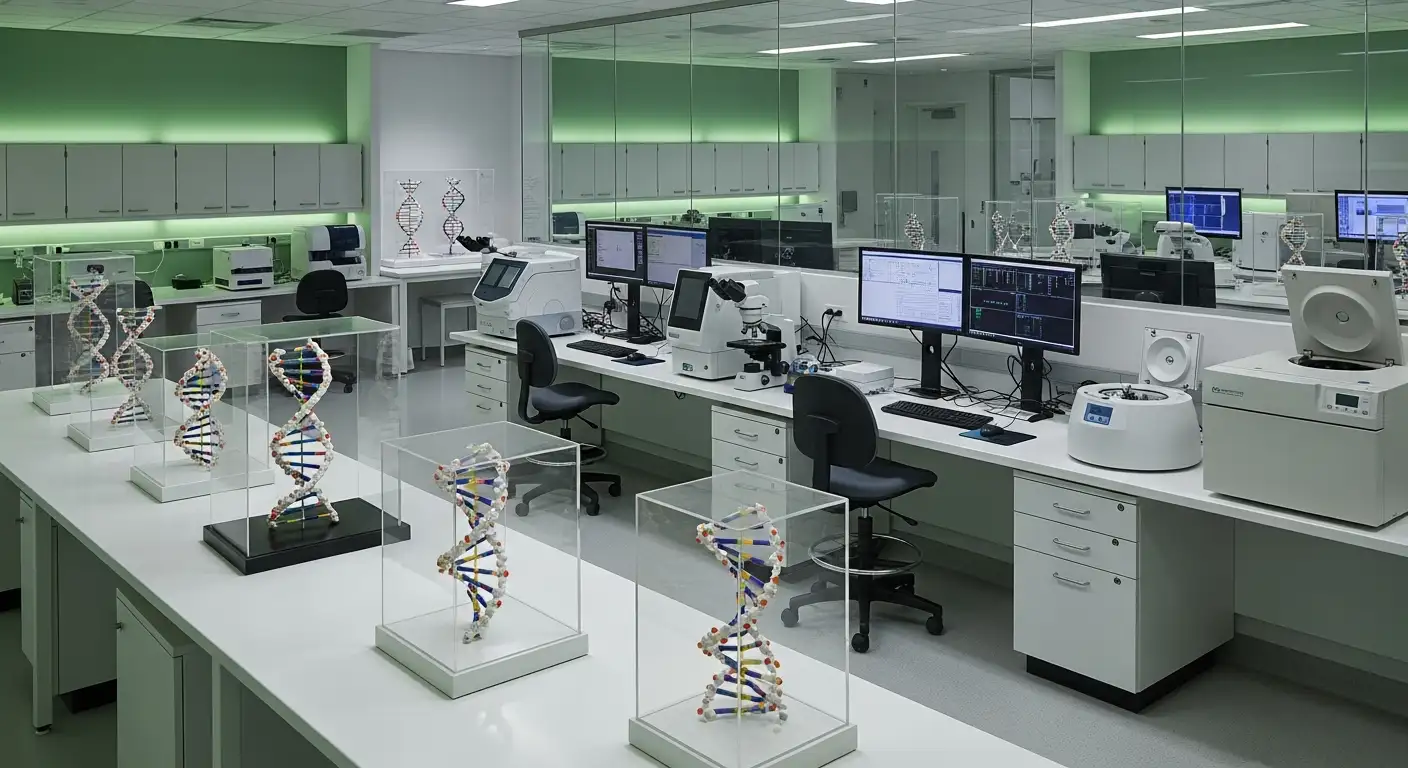What is a timed monitoring cycle and how does it work?
Understanding the Mechanics of Timed Monitoring Cycles

Discovering the Core of Timed Monitoring
A timed monitoring cycle is a systematic approach used across multiple fields to ensure processes are functioning optimally, deviations are detected early, and improvements are implemented continuously. By setting specific intervals for observation and measurement, organizations can maintain high standards of performance, safety, and efficiency. This article explores what a timed monitoring cycle entails, how it operates, its benefits, and its applications across various industries.
Defining a Timed Monitoring Cycle and Its Fields of Use

What is a timed monitoring cycle and in which fields is it used?
A timed monitoring cycle is a structured process that involves regular observation and measurement of specific processes or events at predetermined intervals. This approach ensures that performance standards are maintained, compliance is upheld, and any deviations are promptly identified for correction.
By establishing precise time frames for data collection, organizations can monitor progress, detect inefficiencies, and implement improvements effectively. This systematic approach is essential across many sectors, including manufacturing, healthcare, software development, and project management.
In manufacturing, a timed cycle helps track production rates, identify bottlenecks, and optimize workflows. In healthcare, it supports clinical monitoring, such as tracking patient vitals or fertility cycles. Software teams use it to measure development progress, decrease cycle times, and improve release frequency. Project managers rely on it to keep tasks on schedule and meet deadlines.
Modern digital systems, like Manufacturing Execution Systems (MES), real-time analytics tools, and automated monitoring software, enhance the precision of cycle tracking. These technologies enable continuous performance assessment, quick data analysis, and informed decision-making.
Overall, a timed monitoring cycle contributes to continuous improvement, cost reduction, quality enhancement, and efficiency optimization, making it a versatile tool used across various industries for operational excellence.
Operational Mechanics of a Timed Monitoring Cycle

How does a timed monitoring cycle operate and what are its main components?
A timed monitoring cycle works by setting specific intervals at which it conducts observations or actions, ensuring ongoing oversight without manual intervention. It operates through several interconnected system components that facilitate smooth and effective monitoring.
One of the primary components is the cycle time measurement mechanism, which tracks how long each process or task takes from start to finish. This measurement is vital for identifying delays or inefficiencies.
Data collection is another critical element, involving the continuous transfer of information from process checkpoints such as application cycle data and process image transfers. This data is aggregated and transmitted via transmission methods that can be automated to ensure real-time updates.
Once data is collected, the system performs analysis and diagnostics in real-time, comparing actual cycle durations with predefined maximum and minimum thresholds. Such thresholds are configured based on operational standards and are central to detecting anomalies.
If cycle times breach these configured limits, the system can activate exception handling routines. This might involve generating error events, diagnostics reports, or executing specific routines to handle the irregularities.
Visualization interfaces provide stakeholders with insights into ongoing process performance, facilitating prompt decision-making. Additional components include system feedback loops that allow for adaptive adjustments based on monitored data.
Overall, a timed monitoring cycle is designed to provide continuous, automatic oversight of processes, enabling early detection of issues, ensuring optimal operation, and supporting ongoing process improvements through timely interventions.
Understanding Cycle Time and Its Measurement

What is cycle time and how is it measured in a monitoring cycle?
Cycle time is the total time needed to complete a specific task or process from start to finish. This includes all steps such as setup, processing, and completion. In manufacturing, it can refer to how long a machine takes to produce one unit, while in other sectors, it may encompass waiting times and delays.
Measuring cycle time involves tracking the elapsed time from the beginning of the process until everything is finished. This can be done through direct observation, timestamps in software, or automated data collection tools. For example, in a production line, measuring how long it takes from when an item enters the system until it’s ready for shipping provides a clear cycle time.
The importance of measuring cycle time lies in its ability to help organizations identify inefficiencies and bottlenecks. A shorter cycle time usually indicates a more efficient process. Improving cycle time is connected to other benefits like increased productivity, optimized resource use, and quicker customer delivery. Whether in manufacturing, project workflows, or service industries, understanding and managing cycle time is vital for continuous improvement.
Benefits and Significance of Timed Monitoring Cycles

How does cycle monitoring improve fertility management?
Implementing timed monitoring cycles significantly enhances fertility management by providing precise information about ovulation and the optimal window for conception. Regular ultrasounds and blood tests track follicle development, hormone peaks, and endometrial readiness. This precise timing helps women plan intercourse or intrauterine insemination (IUI) at the most fertile phase, increasing the probability of pregnancy.
What are the benefits of implementing timed monitoring cycles?
The benefits include notable improvements in understanding reproductive health, early detection of potential issues, and increased efficiency in fertility treatments. Women gain a detailed view of their cycle, which allows for better planning and fewer unnecessary medical procedures.
This method also reduces the guesswork involved in natural family planning, leading to higher success rates in conception. Because the process involves non-invasive blood tests and ultrasounds, it is considered safe and comfortable.
Additionally, with timely insights, healthcare providers can tailor treatments more effectively, whether for natural cycles or assisted reproduction. The overall process fosters informed decision-making and promotes confidence in managing reproductive goals.
How does cycle monitoring contribute to process understanding?
Cycle monitoring helps both women and healthcare providers understand the regularity and health of the menstrual cycle. By observing follicle growth and hormonal fluctuations over several days, patterns emerge that can reveal underlying issues, such as ovulation problems or hormonal imbalances.
This deeper knowledge assists in diagnosing reproductive concerns early, allowing interventions before more complex treatment options are necessary.
In what ways does cycle monitoring aid in early issue detection?
Early detection of issues is crucial for successful fertility treatment. Continuous monitoring techniques can identify abnormal follicle development, irregular hormone levels, or uterine lining problems. Catching these factors early means healthcare providers can adjust treatments promptly, improving overall success prospects and avoiding delays.
How does cycle monitoring improve reproductive health and outcomes?
By carefully tracking each component of the cycle, women and clinicians can ensure the reproductive system is functioning optimally. It also helps time procedures to coincide with natural or stimulated ovulation, maximizing the chances of conception.
When combined with other fertility treatments, such as medication or hormone therapy, cycle monitoring enhances their effectiveness. Ultimately, this vigilant approach supports higher pregnancy rates, healthier pregnancies, and better understanding of individual reproductive health.
| Aspect | Benefit | Additional Insight |
|---|---|---|
| Efficiency | Better timing for conception or contraception | Reduces unnecessary interventions and optimizes resource use |
| Fertility Understanding | Deepens awareness of reproductive patterns | Facilitates personalized treatment plans |
| Early Issue Detection | Identifies problems before complications arise | Enhances success rates and reduces delays |
| Quality Improvements | Supports safe, non-invasive assessment | Promotes confidence and informed decisions |
Cycle monitoring's strategic application across health and industry demonstrates its importance in optimizing processes, improving outcomes, and fostering informed decision-making.
Sequential Steps in a Typical Timed Monitoring Cycle
 A typical timed monitoring cycle involves several carefully planned phases that ensure effective oversight and continual improvement. The first step is planning and design, where the monitoring process is outlined. This includes defining clear objectives, selecting relevant indicators or metrics, identifying key stakeholders, and establishing baseline data. In healthcare settings, this stage might involve determining which ultrasound and blood tests are necessary to track follicle development and hormone levels.
A typical timed monitoring cycle involves several carefully planned phases that ensure effective oversight and continual improvement. The first step is planning and design, where the monitoring process is outlined. This includes defining clear objectives, selecting relevant indicators or metrics, identifying key stakeholders, and establishing baseline data. In healthcare settings, this stage might involve determining which ultrasound and blood tests are necessary to track follicle development and hormone levels.
Once the planning stage is complete, the next step is data collection. This involves scheduling and performing observations or tests at predetermined times, such as these happening over 5-10 days during a menstrual cycle. In fertility care, this means ultrasound scans to monitor follicle size and ultrasound assessment of uterine lining, as well as blood tests to measure hormone levels like estrogen and LH.
Following data collection, the cycle moves into analysis and reporting. All gathered data are reviewed regularly—often daily—by healthcare providers or project managers. Patterns are identified, and detected issues are documented. In fertility clinics, this helps determine the optimal timing for ovulation triggers and intercourse. The information is then compiled into reports that are shared with all relevant parties, promoting transparency and understanding.
The final phase involves making adjustments and improvements based on the insights gained. For example, if follicle growth is slower than expected, medication dosages might be adjusted or the timing of procedures changed. In project management or process industries, this could mean refining workflows or applying new tools to improve efficiency. The cycle then restarts, with ongoing evaluation ensuring continuous tracking of progress and effectiveness. This structured approach helps to optimize outcomes, whether in medical treatment or operational processes.
Enhancing Processes through Cycle Monitoring in Various Fields
Cycle monitoring is a valuable tool that boosts efficiency and effectiveness across diverse areas such as healthcare, automation, and project management.
In healthcare, especially in fertility care, cycle monitoring involves tracking hormonal levels through blood tests and assessing follicle development via ultrasounds. This process helps identify ovulation timing, supports early detection of menstrual irregularities, and guides personalized treatment plans. By providing real-time data, it promotes self-awareness among women, helping them understand their bodies better and make informed health decisions.
Automation benefits significantly from cycle monitoring by leveraging technology such as smartphone applications, wearable devices, and artificial intelligence. These systems can automatically record and analyze cycle data, offering accurate tracking and predictions. Real-time insights enable timely adjustments, improving treatment outcomes in fertility therapies or health management, and increasing overall process accuracy.
In project management, cycle monitoring aids in planning and scheduling by predicting high-risk periods and optimal times for resource deployment. Continuous monitoring of project tasks, much like biological cycle tracking, helps identify bottlenecks and allows proactive decision-making. This approach leads to more efficient workflows, better risk mitigation, and successful achievement of project goals.
| Field | How Cycle Monitoring Enhances Processes | Examples |
|---|---|---|
| Healthcare | Detects fertility issues, guides treatment, fosters self-awareness | Ovulation timing, menstrual irregularity diagnosis |
| Automation | Enables real-time data collection, improves accuracy, supports AI-driven adjustments | Smartphone health apps, wearable sensors |
| Project Mgmt | Predicts risk periods, assists in schedule optimization, improves resource allocation | Task deadlines, risk mitigation planning |
Overall, integrating cycle monitoring into these fields fosters a data-driven approach, leading to better outcomes, safety, and operational improvements.
Fundamental Concepts for Understanding Timed Monitoring Cycles
What basic concepts and definitions are important to understand regarding timed monitoring cycles?
Understanding timed monitoring cycles hinges on grasping several fundamental ideas. The most central concept is cycle time, which refers to the total duration needed to complete a process or task from start to finish, including any delays, hold times, or waiting periods. This measurement is vital for assessing operational efficiency and identifying areas where processes can be streamlined.
Another key term is lead time, which differs from cycle time. Lead time captures the entire period from when a customer places an order or request until they receive the product or service. While cycle time zeroes in on the processing phase, lead time encompasses waiting, transportation, and other non-value-adding activities.
To monitor and optimize these times effectively, organizations rely on schedules and data collection methods. Regular data tracking through methods like time logs, automated systems, or process mining helps spot bottlenecks, delays, and variations in process flow.
Various techniques aid in analyzing and reducing cycle times. Value stream mapping visualizes the entire process, highlighting waste and inefficiencies. Mistake-proofing techniques prevent errors that could cause rework and delays. Lean tools such as Single-Minute Exchange of Die (SMED) focus on reducing changeover times to improve flow.
Employing these concepts and techniques supports aligning production processes with customer demand—commonly referred to as takt time—and fosters continuous process improvement. Mastery of these basic principles enables organizations to enhance productivity, reduce costs, and respond more swiftly to market needs.
Conclusion: The Integral Role of Timed Monitoring Cycles
What is a timed monitoring cycle and how does it work?
A timed monitoring cycle is a structured process that involves regularly observing and measuring processes or events at set intervals. It operates by collecting data continuously, analyzing this information in real time, and comparing actual performance against predefined thresholds or targets. This systematic approach helps identify deviations, inefficiencies, or anomalies early on.
The core components include data collection tools, automated analysis systems, and alert mechanisms that notify stakeholders of issues needing attention. By enabling prompt responses and continuous oversight, these cycles support ongoing process improvements, enhance operational efficiency, and bolster decision-making capabilities.
Looking ahead, the evolution of monitoring cycles promises the integration of advanced technologies like Internet of Things (IoT) devices, machine learning, and predictive analytics. These innovations will allow systems to become smarter, more adaptive, and faster in detecting potential problems. Consequently, organizations will achieve more resilient and efficient operations, minimizing downtime and optimizing performance on an unprecedented scale.
Summarizing the Significance and Future of Timed Monitoring Cycles
In summary, timed monitoring cycles are vital tools across sectors for maintaining and improving operational performance. By establishing regular, systematic observation intervals, organizations can quickly detect problems, optimize processes, and make informed decisions. With technological advancements, the integration of AI, IoT, and automation promises to elevate the capabilities of these cycles, making them smarter, more adaptive, and increasingly vital to ongoing innovation and efficiency. Embracing these developments will empower organizations to achieve higher productivity, better quality outcomes, and enhanced responsiveness to changing demands, securing a competitive edge in an ever-evolving landscape.
References
- Cycle Monitoring - TRIO Fertility
- Cycle Monitoring: What to Expect, Benefits, and Limitations
- Understanding Cycle Time: Definition, Calculation, and Importance
- Cycle time | Engineering Metrics Library - Software.com
- Cycle Time: How to Optimize Time-to-Completion - Whatfix
- Cycle Time: How Long a Task Takes in Agile | Adobe Workfront
- Fertility Cycle Monitoring I Barrie, Whitby, Niagara, Waterloo
- The Future Is Now: Real-Time Monitoring And Its Implications
- Cycle Time: The metric all businesses should use to drive ... - Celonis
- Cycle Time vs. Lead Time: What Do These Metrics Tell You?



































































































